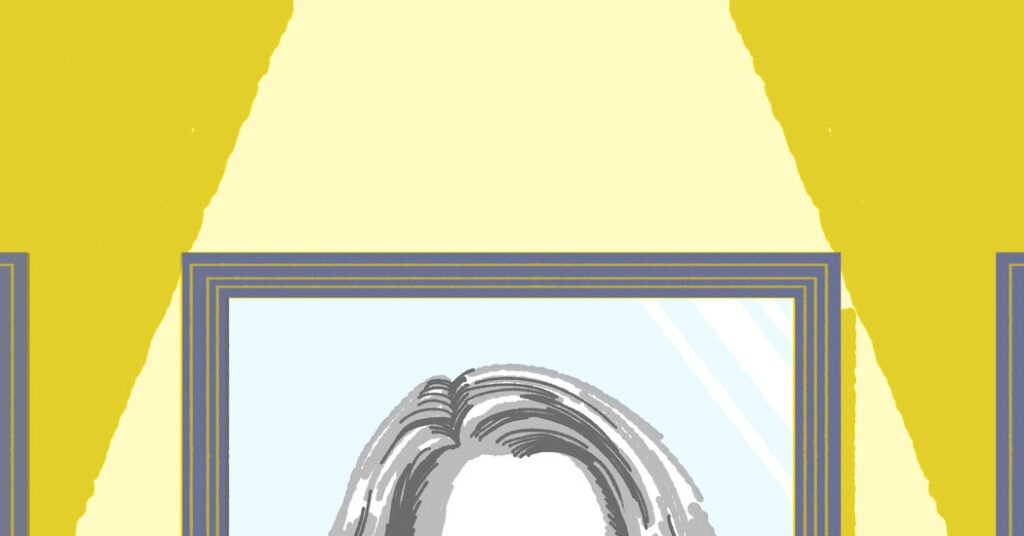Times Insider explains who we are and what we do and delivers behind-the-scenes insights into how our journalism comes together.
The critical voice in Roberta Smith’s head is mercifully, blessedly silent.
“I can walk into a show now and not have the first line of the review pop into my head,” said Ms. Smith, 76, who retired last month as the co-chief art critic of The New York Times.
The announcement prompted tributes on social media from fellow critics, artists, gallery owners, curators and readers, who called her “legendary,” “peerless” and “a critical model for a lifetime.” Over her 38-year career at The Times, Ms. Smith cultivated a reputation for intimate observations conveyed in accessible prose. She began her career as a freelance critic for The Times in 1986 before being hired in 1991. In 2011, she was promoted to co-chief art critic — the first woman to hold the title, which she shared with Holland Cotter.
But now, without the pressure of having to present a point of view in The Times, she’s free to do what she loves most — visit shows and galleries just to look.
“I look at shows less intently when I’m not writing about them,” she said. “That means sometimes I may not come out with a really formed opinion, because there isn’t that pressure.”
In a recent phone conversation from her Greenwich Village apartment, where she lives with her husband of 32 years, the New York magazine art critic Jerry Saltz, Ms. Smith discussed her journey to becoming a professional critic, how her taste in art has changed over the years and what it’s like being married to a fellow critic. These are edited excerpts.
How did you get started as a critic?
I began writing when I was 25 as a freelancer at Arts Magazine — which is now defunct — with an article on the painter Brice Marden. I became a critic in the same way a lot of people become critics: by immersing themselves in a subject and having enough confidence to listen to their opinions. Criticism isn’t really an academic subject. I don’t think it can be taught at school; it’s much more visceral. It happens when you’re in front of art, examining it, articulating opinions and trying to convert those opinions into clear prose.
Before joining The Times, you worked at the Museum of Modern Art, the Paula Cooper Gallery and with Donald Judd, the celebrated minimalist. How did those experiences shape your career?
All of those jobs exposed me to different people and their professions, their thinking and also some understanding about how the art world works on a very personal level. But it was writing for The Village Voice in the early 1980s that shaped me most. It gave me a very real sense of writing on deadline. It proved to me that I actually was a critic, not a fraud. That was momentous for me. I had never taken a journalism course. Editors and copy editors — especially at The Times — were my real teachers.
How has the art world, and in response, your beat, changed over the years?
When I started writing about art in 1972 at Arts Magazine, the art world was a completely different place. SoHo barely existed as an art destination; Madison Avenue and 57th Street had the main galleries. Conceptual art was dominant then, which meant an emphasis on ideas and not much on form or materials. It forced me to write more about narrative — and sometimes about everyday life — in a way that hadn’t previously been the case. There was also a tendency in the ’70s to think, well, that’s over; painting is dead; figurative sculpture is not going to be happening anymore. As time went on, those assessments proved wrong, thankfully.
How have you grown as a critic?
I think I’ve changed a great deal. At the beginning of my career, I kind of assimilated Donald Judd’s point of view — which was extremely rigorous in applying judgment. Critics need to be more flexible than artists. You have to be open to being changed and pushed into new directions by art. I don’t feel an obligation to take a strong stand on things.
My main goal has always been to point out art that people would enjoy seeing, and to show them how I saw it and enjoyed it. I think if I have any legacy, it’s teaching people how to look at art. It takes a certain kind of concentration, attention and openness.
What is it like being married to a fellow critic?
Being a critic is really lonely. Jerry made it so I wasn’t alone, and that was a huge gift. He also has really interesting instincts about art that startle me. It helps that we have different approaches to our work and to art. Basically, I stick fairly close to art objects and the experience of them, and I work within a more traditional format. For Jerry, the object is often just the starting point for a larger discussion. He’s more free-form and fluid with his writing.
Your retirement announcement was met with a cascade of tributes on social media. What was that like to see?
It stunned me. There are plenty of times when I absolutely despise my work, so I was quite taken aback. It’s been amazing.






